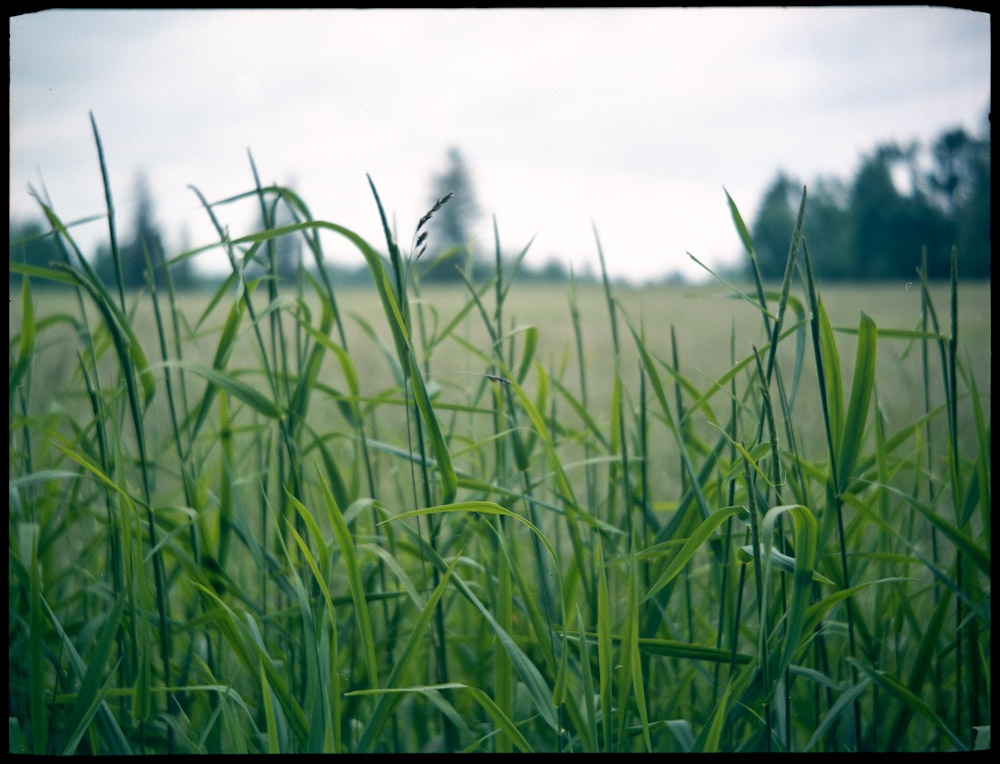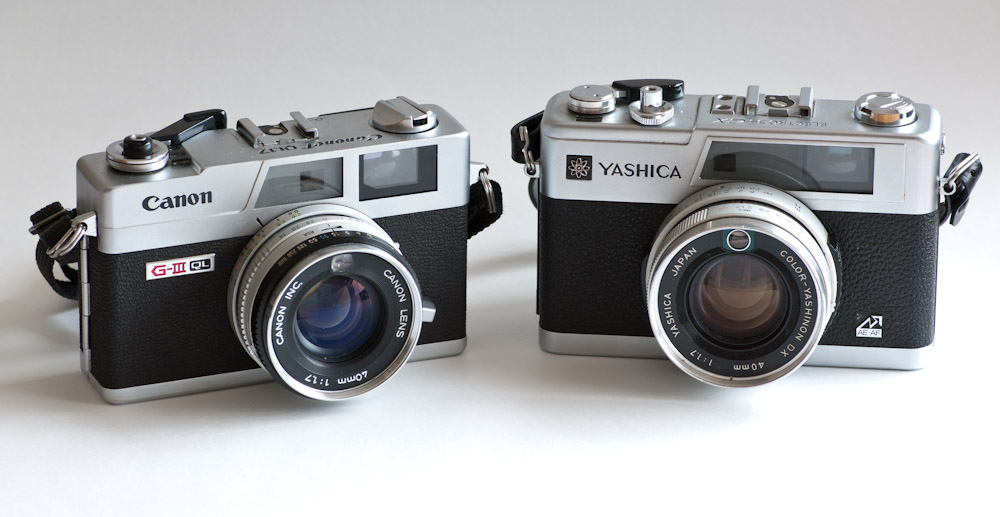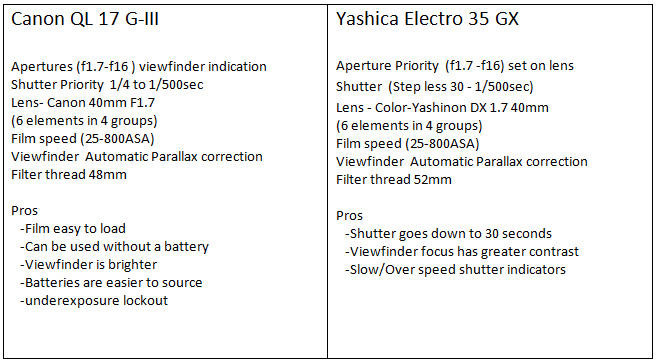Jul
27
2011
Well it’s back to the drawing board. My “lets see what we get and go from there” attitude didn’t pay off with much of a result to start. There was just too much light leaking in. So it’s going to require a major redesign with some baffles and better sealing around the lens board. Some other modifications I’ll make is better tension of the film and a better film mask so that I can get more exposures from a single roll.

Here is the result and if you consider this is the best that I was able to get, by far, you can see that I need to do a lot more work.

Here is the original post when optimism was high. Lego Camera
1 comment | tags: camera, film, Lego | posted in Cameras, Photography, Uncategorized
Jul
17
2011
I’ve been thinking about this for years but I finally took the time to build a medium format LEGO camera. What made the effort all the more desirable was that I was recently given the perfect lens for the project, A Schneider Kreuznach Angulon 65 f6.8. It’s hard to say how wide this will end up being but the negative is about 9 Lego bricks wide so it should be about the equivalent of a 28mm on a 35mm film camera. Lego is not inherently light tight, every seam is a light leak, so I used some black paper inside to keep that down. The lens board was held in place by some light sealing material, otherwise known as tape, and elastics. This provided for a “very accurate” focus mechanism provided you have your eyes closed. There actually was no focus I had previously ground a small piece of glass and used it to roughly determine that the lens board should be about 67mm from the film for infinity focus. If your getting the sense that I’m not really sure of the results then your right. I will send the film off and wait a week just to find out if it worked and how badly the light leaked. I hope I’m pleasantly surprised but if I keep my expectations low then it will be easier to exceed them.

3 comments | tags: camera, film, Lego | posted in Cameras, Photography
Jul
9
2011
Well it’s official this is a great camera. This little rangefinder is exceptional and may be the best fixed lens camera I have ever used. It was the peak of the Yashica Electro 35 line and in retrospect probably the peak of the small rangefinders that came out of the 1970’s.
6 comments | tags: Cameras, film, GX, Photography, Yashica | posted in Cameras, Photography
Jun
24
2011

You go down there. No you go! Send Mikey he’ll go anywhere.
3 comments | tags: film, polaroid | posted in Cameras, Photography
Jun
21
2011
A couple images from the last week with my Baby Bessa.


2 comments | tags: Bessa, film, Photography, Voigtlander | posted in Cameras, Photography
Jun
17
2011
Operation and handling
While these cameras where state of the art in their day, compared to a modern digital camera they are extremely simple devices. The Canon uses a electro mechanical system to set the aperture. It is a simple galvanometer needle that’s position is trapped when the shutter is pressed, this is then translated into an aperture through a linkage. I found that the metering is very susceptible to underexposure due to back lighting. With the Yashica you set the aperture and the camera sets the timing of the shutter, where one of the variables in the circuit is how much light is falling on the silicon sensor. Beyond that they really are a lens and a system of moving the film forward. A small but noticeable difference is in the film advance lever. The Canon requires a longer throw of the lever while the Yashica advance is just a small flick of the thumb. I much prefer the Yashica in this respect. On the other hand the focus control on the Canon is superior, it includes a knob off to the left that makes focus adjustments effortless. The Yashica’s focus however is adjusted with rubber patches around the lens barrel near to the camera body and I find that I almost have to reach around the camera to change it making it difficult to focus and shoot without a slight hand position change. Update: A change in how I hold the camera, with my left hand underneath, has made them about equal for focusing.
Both camera’s are rangefinders with focus patches but they appear very different in operation. The Canon is more subtle with it’s square focus patch not impinging on the scene through the viewfinder. The Yashica has a very contrasty diamond shaped patch that I find too intrusive but slightly easier to confirm focus with. The Canon viewfinder is much brighter than the Yashica’s but they both have frame lines that adjust for parallax error. They also have the exact same magnification, I verified this by holding them to my eyes at the same time, An interesting effect of doing this is that you can see in 3D despite looking through them, a not interesting effect is that this can make you feel queasy.
So all that remains is to get my negatives back and do a comparison. I do have a sense that the Canon metering was off in some circumstances as it seemed to be selecting too small an aperture for the conditions. This isn’t normally a large problem though as under other conditions I would use this camera in full manual mode, which is not an option for the Yashica.
Part one
6 comments | tags: camera, Canon, film, Yashica | posted in Cameras
Jun
13
2011
Finally the answer everyone has been waiting 35 years to have. Which is better the Canon Ql17 GIII or the Yashica Electro 35 GX? Really no one, just me?


So you can see that they are very similarly specified with the greatest difference being that the Canon is Shutter priority and the Yashica is aperture priority. The next phase of testing will be to run some film through each of them. As I can’t determine precisely the shutter speed or aperature for each of them I may not record any info but just take matching pictures.
5 comments | tags: Cameras, Canon, film, Yashica | posted in Cameras, Photography
Jun
9
2011
I guess this was someones idea of golden lions. Taken with the Canon Ql17.

no comments | tags: Canon, film, Photography | posted in Cameras, Photography
Jun
5
2011
Not quite what I had in mind. I wanted to make the background completely black and have the signs glowing. The flash fired even though I believe I had it overridden, so I will need to figure that out as the idea that’s starting to develop in my mind won’t work with flash. And yes this is a double exposure that isn’t one of those ghost signs.

1 comment | tags: film, polaroid | posted in Photography, Processing
Jun
3
2011
It’s sure hard to hold this sucker still. Yes this camera creates very large 6×9 cm negatives but the problem is that to get sharp images you really need to use a tripod. All of these shots suffer from some motion blur when you look close enough or if they were enlarged. Also the fact that you only get 8 frames on a roll puts them in the $2 per exposure cost range.
3 comments | tags: camera, film, Photography, Zeiss | posted in Cameras, Photography























